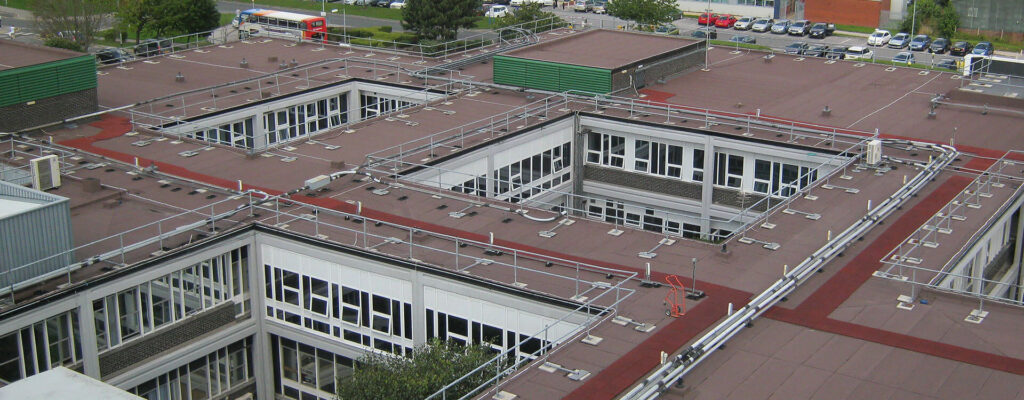IKO’s Mastic Asphalt solution, IKO Permatrack, was utilised by Infallible Systems, a South East London-based contractor, to renovate London Bridge’s walkways along with the base of the towers.
Tower Bridge is one of London’s most iconic landmarks and attracts tens of thousands of visitors, travellers, residents, and commuters every day, not to mention the over twenty thousand vehicles crossing daily.
Back in 2016 though, sightseers were held back from the bridge for three months while its lifting sections, walkways and approaches were repaired.
Infallible Systems started by removing any existing Mastic Asphalt and replacing it with the IKO Permatrack Bridge Surfacing System layered over a Mastic Asphalt waterproofing.
Hard, durable, and long-lasting, IKO’s Mastic Asphalt solution was the perfect provision for this project and provided the bridge’s pedestrians with a jointless and trip hazard-free walkway, ensuring the safety of the bridge users while also providing a solution that will be able to withstand millions of people walking across and enjoying one of London’s most iconic sights each year.
John Chapman, part of Infallible Systems’ team, couldn’t have been happier either: “We’ve been IKO customers since we were founded more than 30 years ago.”
“Their product is excellent, their after-service is fantastic, and the help their Technical Teams gave with the initial spec was invaluable.”
“Better yet, they were even able to complete the job a whole week ahead of schedule, allowing the bridge to re-open its gates just in time for Christmas.”
Mastic Asphalt used to achieve a Carbon Zero project
At IKO, we always factor the environmental impact of our work into our plans and for this project alone the 400 tonnes of Mastic Asphalt used equated to 50.11 tonnes of CO2 offset.
The net carbon footprint of this project is entirely offset using internationally approved carbon credits, which means for every tonne of Mastic Asphalt made, we are helping to fund environmental and humanitarian causes.
The below shows a breakdown of our impact by sector for the London Tower Bridge project.
Impact sector, impact, and quantitative data
Environment:
- Wood saved – 40 tonnes.
- Area protected – 0.13 hectares.
Social:
- Number of stoves – 15.
- Time saved – 1,039 hours.
- Young people impacted – 48.
- Elderly people impacted – 15.
- Total people impacted – 85.
Economic:
- Working time saved – 1,039 hours.
- Working days equivalent – 130.
Health – likely reduced cases from project support:
- Respiratory illnesses (lower chest/lung) – 12.
- Asthma – 11.
- Ear, nose, and throat irritation – 4.
- Total reduced instances of serious illness attributed to indoor smoke – 27.
The history of London’s Tower Bridge
London’s Tower Bridge was built between 1886-1894 and is a combined bascule and suspension bridge. It crosses the River Thames, sits close to the Tower of London and, on any given day, welcomes more than 21,000 vehicles and 40,000 people.
Structurally, the bridge consists of two towers tied together by two horizontal walkways, which were designed specifically to withstand the tension forces caused by the suspended sections of the bridge and landward sides of the towers.
Vertically, the towers themselves counteract the forces in the suspended sections and the reactions of the two walkways.
The bridge’s bascule pivots, and operating machinery are housed in the base of each tower and the current red, white, and blue colour scheme dates back to 1977 when it was re-painted for Queen Elizabeth II’s Silver Jubilee.
If you have any queries or questions regarding this project or need to discuss your next project in detail utilising our Mastic Asphalt solutions don’t hesitate to contact us today.



